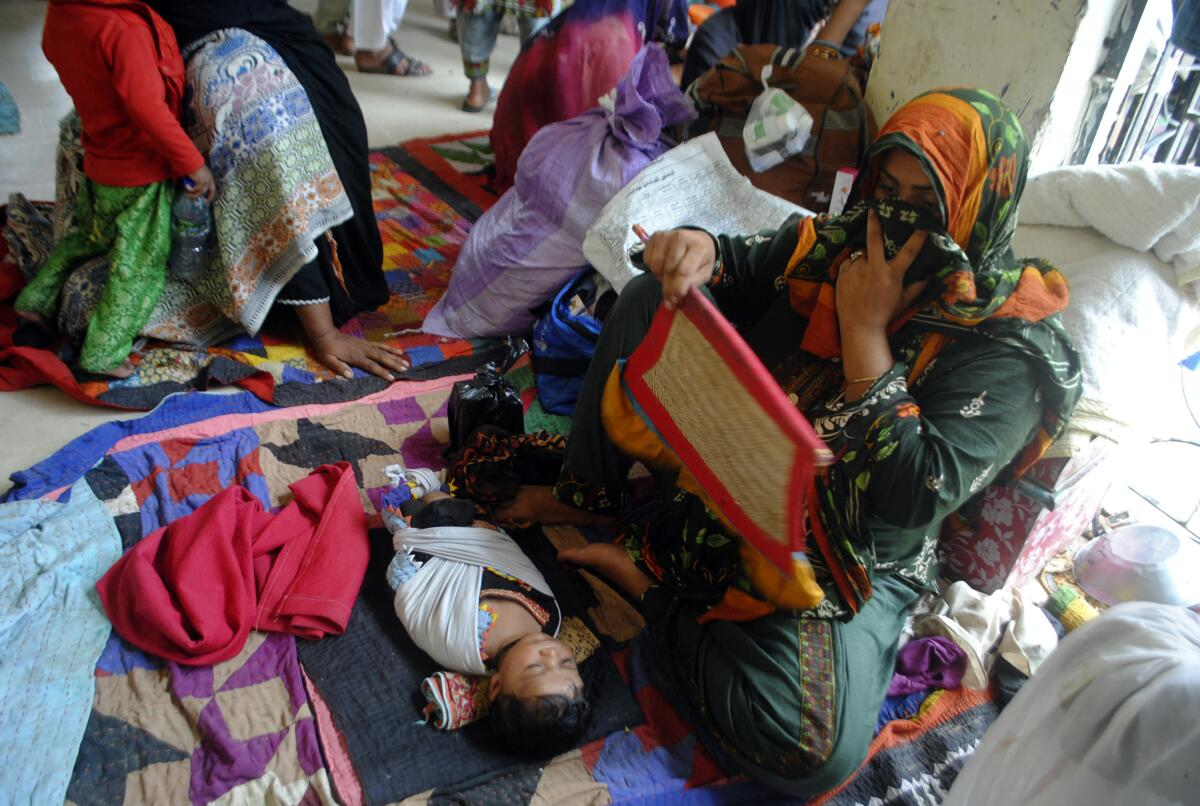Opinion: Climate change is worsening the world’s refugee crisis. Here’s one way leaders can help

- Share via
Refugees bring very little across borders, but they cling to their stories. These days they mostly want to talk about the weather.
The refugees I work with often say the same thing: It got hot. Then hotter. Then the jobs dried up and eventually the food did too. Add in political, racial or religious tensions, or a natural disaster that was the final straw. It all led to the same conclusion: There is no future here.
And these are from the “lucky ones” who made it out.
Today there are millions of climate refugees — people who have fled their homes because changes in the local environment made living conditions unsustainable — and estimates suggest that there will be more than 1 one billion by 2050. Despite this, no nation in the world offers asylum on the grounds of fleeing environmental or climate emergencies.
Worsening climate conditions make increased migration inevitable. Research shows that as global temperatures rise, so do asylum applications, and those from the world’s so-called hot spots are the first to try to leave. World governments need to adapt to meet this humanitarian crisis.
The establishment of a fund to help poor nations getting hit hard by extreme weather events was one of the most significant decisions to come out of U.N. climate talks in the last 30 years
Most nations that offer asylum and international organizations aiding migrants adhere to guidelines set at the 1951 Refugee Convention, which offers protection to only those who are fleeing because of race, religion, nationality or affiliation with a particular social group or political opinion.
Yet more than 80% of refugees today are fleeing countries severely affected by climate change and where treacherous conflicts are exacerbated by catastrophic events such as floods, droughts and earthquakes. Last year there were 32.6 million new displacements triggered by natural disasters, the highest number in a decade and 41% higher than the annual average over the last 10 years.
Given that climate is increasingly a key driver of migration, or one of the many compounding reasons that could force a family to leave their home, the guidelines for asylum should be updated and a formal definition for climate refugees must be determined.
If an official definition for climate refugees is developed, funding support for these migrants could also increase. Budgets now earmarked strictly for climate could help support the millions in need.
Better legal frameworks at the national and international levels to protect and assist refugees, asylum seekers and vulnerable migrants are also needed. If leaders continue to avoid the problem, those seeking asylum from climate emergencies are left with, at best, temporary solutions.
Despite the difficult living situations and impossible regulations that migrants face, I have seen their incredible resilience and optimism over more than a decade, in refugee camps in Kenya, Turkey, Greece and Bangladesh.
Climate change is expected to displace 150 million people in the next 50 years. The death of a young migrant in a Libyan prison shows what’s to come.
Once, in 2017 on the Somali border, I interviewed families who had fled drought and famine for not much better conditions in neighboring Kenya. The refugee complex, consisting of three camps, housed just over 270,000 people at the time — almost twice the population of Pasadena. The average temperature was in the high 90s, drinking water was limited, and food rations were insufficient. Volatile religious and racial tensions had followed the migrants into the camp. And yet they were hopeful.
I sat with one young man who had been born in the camp, giving him no passport or birth certificate to enter Somalia or refugee status to enter Kenya. But he showed me a pixelated stock photo of a turquoise sea and stated, “One day I will go to the ocean.”
We need a formal climate asylum status so that he and the millions like him can find security and paths to a better life.
Rwaida Gharib is a Yale Public Voices Fellow on the Climate Crisis. She will begin graduate work in environmental resources at Stanford in the fall.
More to Read
A cure for the common opinion
Get thought-provoking perspectives with our weekly newsletter.
You may occasionally receive promotional content from the Los Angeles Times.












